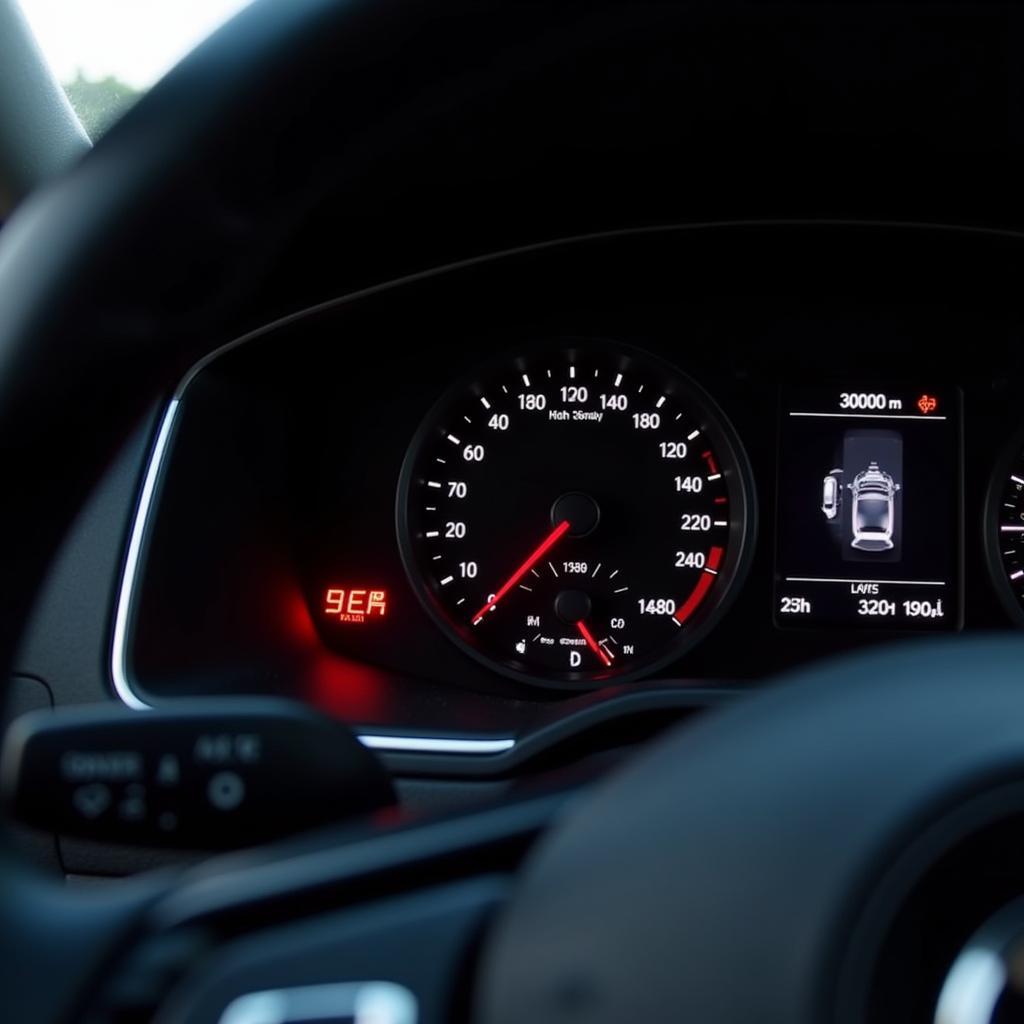The brake warning light on your dashboard is a crucial safety feature, designed to grab your attention if there’s an issue with your braking system. Ignoring it could put you and others at risk. If you’re wondering, “Why would my brake warning light keep coming on?” – you’re in the right place. This article will guide you through the most common culprits and how to address them.
Common Reasons Your Brake Warning Light is On
Let’s delve into the most frequent reasons why your brake warning light might be flashing its urgent message:
1. Low Brake Fluid Level
The most common reason for an illuminated brake warning light is low brake fluid. Your car’s braking system relies on hydraulic pressure to function correctly. When the brake fluid level drops, often due to a leak or worn brake pads, the pressure reduces, triggering the warning light.
What to do:
- Check Your Brake Fluid Level: Open your hood and locate the brake fluid reservoir (refer to your owner’s manual if unsure). The reservoir will have a “Min” and “Max” marking. If the fluid level is below the “Min” mark, it needs to be topped up.
- Inspect for Leaks: While checking the fluid level, carefully examine the reservoir and the brake lines underneath your car for any signs of leaks. Look for wet spots, drips, or a noticeable decrease in fluid level over time.
2. Worn Brake Pads
Brake pads are designed to wear down over time. When they reach a certain thinness, a small metal indicator embedded within the pad will contact the brake rotor, causing a high-pitched squealing sound and illuminating your brake warning light.
What to do:
- Listen for Squealing: If you hear a high-pitched squeal when applying your brakes, it’s a telltale sign of worn brake pads.
- Schedule a Brake Inspection: Don’t delay getting your brakes checked by a qualified mechanic. They can determine the extent of the wear and replace the pads if needed.
3. Faulty Brake Light Switch
The brake light switch, located near the brake pedal, is responsible for activating your brake lights when you press the pedal. A malfunctioning switch can disrupt the brake light circuit, sometimes causing the brake warning light to illuminate.
What to do:
- Check Your Brake Lights: Have a friend or family member stand behind your car while you press the brake pedal. If the brake lights don’t illuminate or flicker, it could indicate a faulty brake light switch.
- Consult a Mechanic: Replacing a brake light switch usually involves accessing the area under the dashboard, which can be tricky. It’s best to have a professional handle the replacement.
4. ABS Issue
Modern vehicles come equipped with an Anti-lock Braking System (ABS) that prevents wheels from locking up during hard braking, improving control. A problem within the ABS system, such as a faulty sensor or a wiring issue, can trigger the brake warning light.
What to do:
- Check for Other Warning Lights: An ABS issue is often accompanied by an illuminated ABS warning light on the dashboard.
- Seek Professional Diagnosis: Diagnosing and repairing ABS problems requires specialized equipment and expertise. A qualified mechanic can pinpoint the exact issue and perform the necessary repairs.
5. Issue with the Master Cylinder
The master cylinder is the heart of your braking system, responsible for distributing brake fluid to all four wheels. A failing master cylinder, often indicated by a spongy or soft brake pedal, can lead to brake failure and illuminate the warning light.
What to do:
- Be Aware of Brake Pedal Feel: If you notice a significant change in your brake pedal’s feel, such as sponginess, softness, or the pedal sinking to the floor, it could indicate a master cylinder problem.
- Seek Immediate Attention: A failing master cylinder is a serious safety concern. Stop driving immediately and have your vehicle towed to a trusted mechanic.
What to Do When Your Brake Warning Light Comes On
“Why would my brake warning light keep coming on?” is a question best answered with caution. Here’s a summary of actions based on the potential severity:
- Pull over and stop if: You experience a soft or spongy brake pedal, indicating a potential brake failure.
- Check your brake fluid level: If it’s low, add the appropriate brake fluid, but remember this is a temporary fix, and the underlying leak needs addressing.
- Schedule an immediate inspection with a qualified mechanic: This is crucial if you hear unusual noises, experience changes in braking performance, or suspect any of the issues mentioned above.
Ignoring Your Brake Warning Light – A Risk Not Worth Taking
Your vehicle’s brake warning light is a critical safety indicator, not to be ignored. Addressing the underlying issue promptly can prevent costly repairs and, most importantly, keep you safe on the road.
Remember, when it comes to brakes, err on the side of caution. If you have any doubts or concerns, consult a qualified mechanic immediately.

